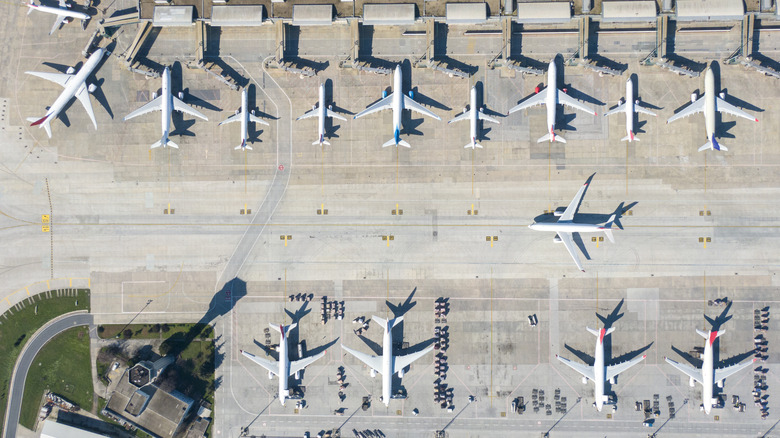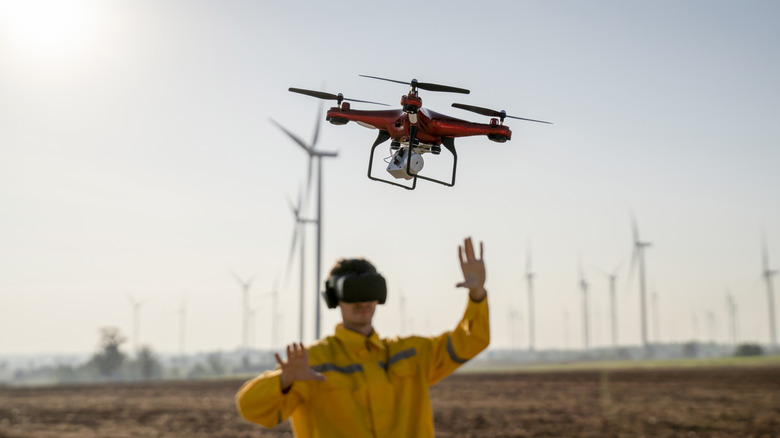What Really Happens After A Drone Is Spotted At An Airport?
Drones can be a fun way to get unique aerial photography, but they are often a no-go when you're traveling. You can't use drones when you're on a cruise ship, they're not allowed in the U.S. national parks, and you can't fly them near an airport. Unknown drones entering the airspace around an airport pose a risk since the drones could hit commercial flights as they land or take off. If they're spotted, flights will be stopped, potentially causing major disruptions — an occurrence that's unfortunately become more common in recent weeks.
Twice in one week in September, unidentified drones were seen flying near several airports in Denmark, including a military airport and even the major international airport in Copenhagen. In response to drones, flights were grounded for hours, and the police are investigating the incidents. Norway also had recent drone sightings, which led to the shutdown of the airport in Oslo. It's unclear at this time if the incidents were all linked.
Drone activity can create havoc on airport operations
When a drone is spotted near an airport, it might not be immediately clear if it's a hobbyist drone flyer who accidentally let things get out of hand or if there is a more nefarious bad actor trying to cause trouble. So the best way to keep everyone safe is to shut things down.
The Denmark and Norway incidents are hardly the first time that drones have caused disruptions. Gatwick Airport in London, which is already one of Europe's most stressful airports, shut down for three days in December 2018 after drones were seen in the area.
The Federal Aviation Administration notes that it receives over 100 notifications of drones near airports each month. If a drone operator gets caught violating the laws, they can get fined up to $75,000. Recreational drone operators in the U.S. should take the recreational UAS safety test (TRUST), which includes information about the laws regarding flying near airports. Commercial drone pilots need an FAA certification in the U.S., and if the drone weighs more than 0.55 pounds, it must be registered with the FAA.

